Spelunking Into the Details: The Rolex Explorer II Reference 16550
RolexPublished by: Tony Traina
View all posts by Tony Traina
In the world of vintage Rolex collecting, all the fun is in the details: fat fonts, frog feet, and other such seeming nonsense. Often, these “details” are actually defects: paint that flakes or cracks, bezels that fade abnormally, and other manufacturing techniques with distinctively human elements. By the 1980s, Rolex has begun to mechanize and automate more of its processes, meaning more watches were being pumped out, and those watches had less variation between examples. The small dial details and other variations that vintage Rolex collectors obsess over are not as present in these “transitional” references. This is decidedly not the case with the Rolex Explorer II Reference 16550, introduced in 1985. It was offered in both a glossy black dial and white dial version, but the white dial (“Polar”) is particularly sought after by collectors.
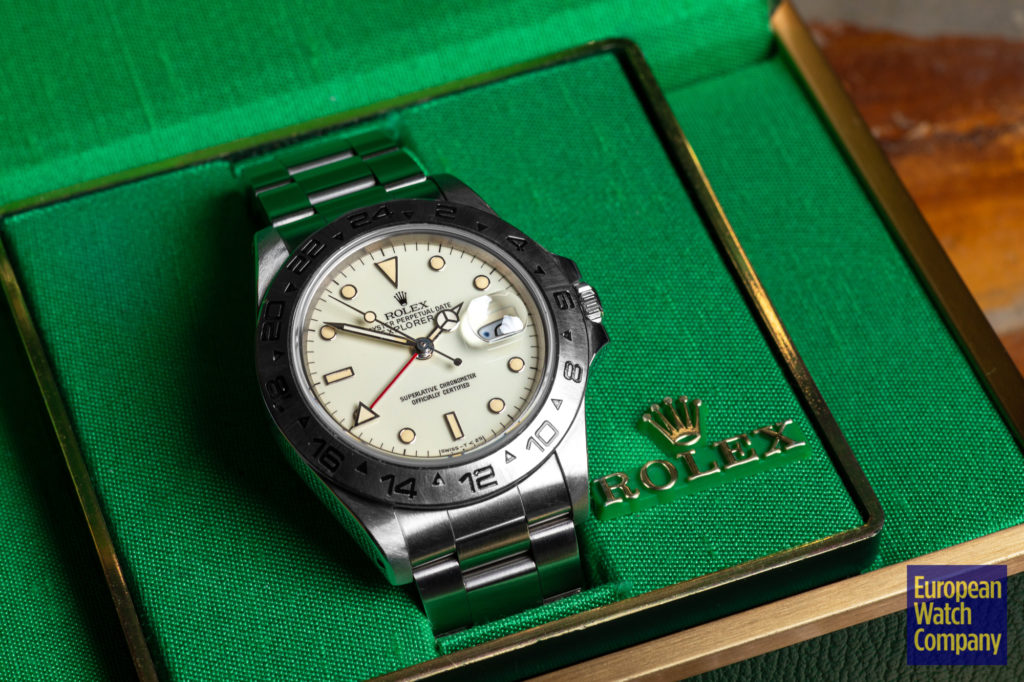
The Explorer II Reference 16550 succeeded the original Explorer II Reference 1655 Freccione, so named for its wide, bright orange 24-hour hand. The updated Reference 16550 was equipped with Rolex’s new caliber 3085, a serious upgrade from the Reference 1655: it featured a quick-set date, hacking seconds, a 42-hour power reserve, and perhaps most importantly, independent adjustment of the GMT hand, allowing the wearer to actually track multiple time zones. Along with the earlier released GMT-Master II (itself a new model), this means the Reference 16550 was the first Rolex to offer an independently adjustable GMT hand—a true innovation from a brand that has made its name developing useful tools for pilots and other professionals.
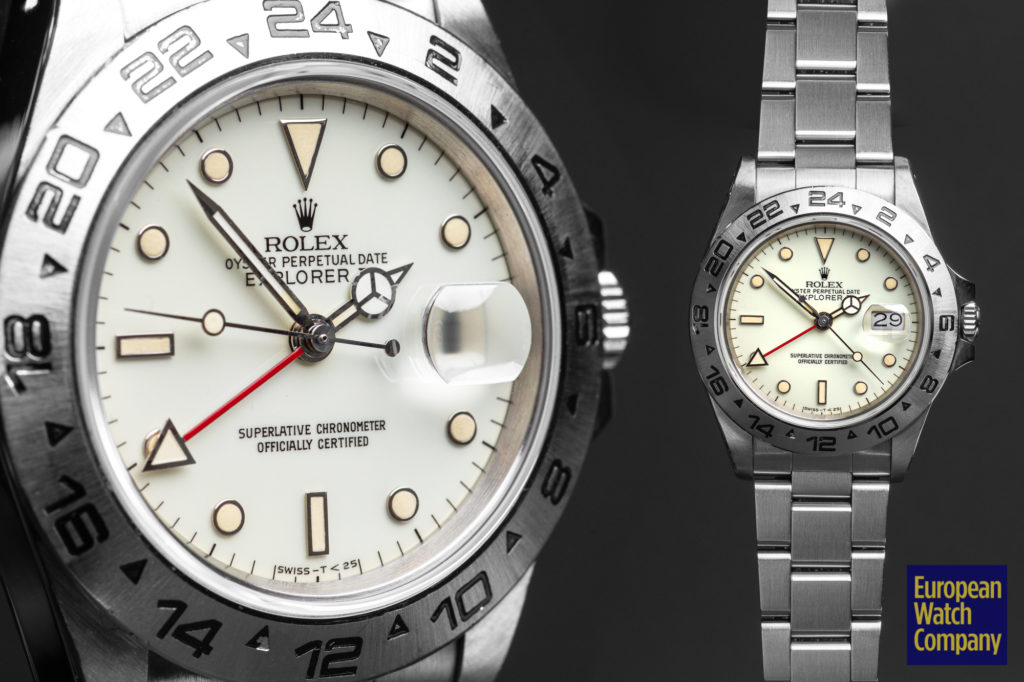
If the story ended there, the Reference 16550 might be just another nice transitional Rolex: updates to bring the Explorer II into the modern era, while still retaining some vintage charm. Of course though, it does not. A defect in the white paint used on the Polar Reference 16550 has caused examples of the reference to take on a creamy patina over time. Italians call it panna (Italian for cream); I call it delicious.
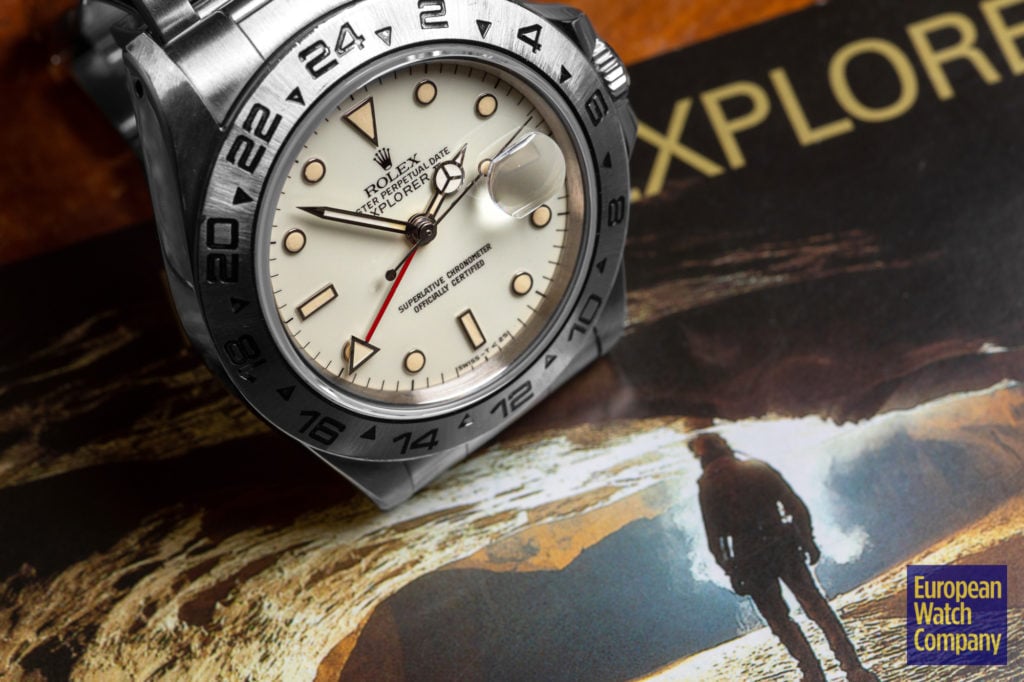
Perhaps owing to what Rolex viewed as a defect, the Reference 16550 was produced for just a few years, supplanted by the Explorer II Reference 16570 in 1989. As far as I’m concerned — and most collectors are, for that matter — the paint is not a bug, it’s a feature. This defect has led the dial to take on a delectable custard patina, the type one might otherwise spend ages searching for. Add to the mix some nicely aged tritium lume, and it’s a modern classic. The subsequent Reference 16570 “fixed” the defect in the white paint, and thus examples of the reference haven’t aged the same luscious way its predecessor has.
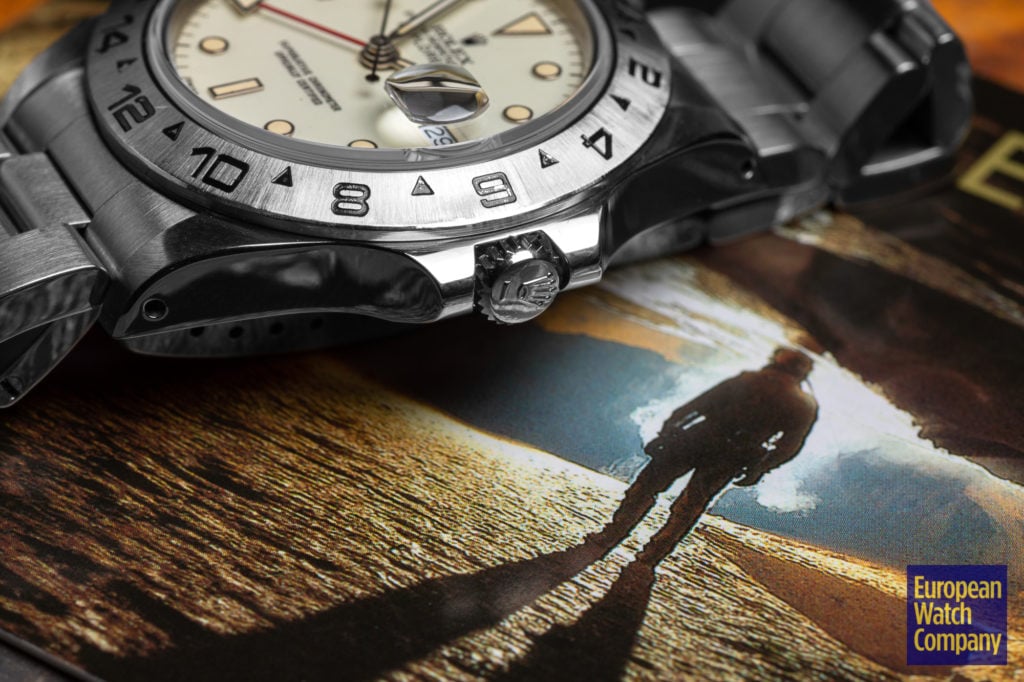
Adding further to the Polar’s ice-cold vibe, many examples feature lume plots and hands topped off with white gold surrounds, a stark contrast to the black surrounds found in later Explorer II models.
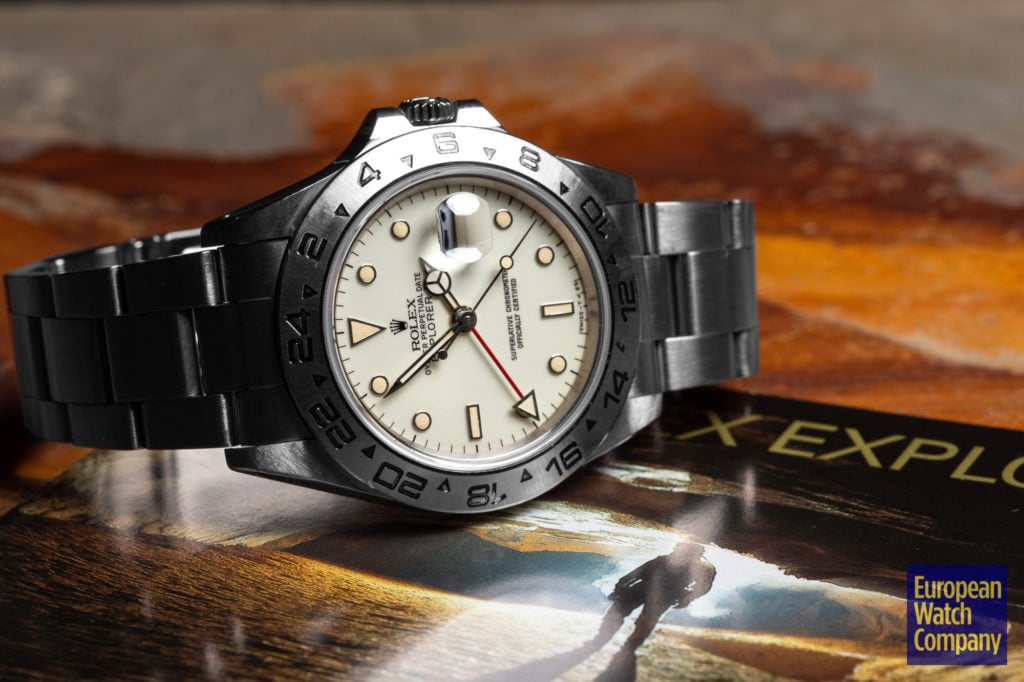
It’s ironic, perhaps, that the Polar Reference 16550 suffered this fortuitous defect: compared to other transitional Rolex references of the 1980s, the updated Explorer II featured some of the most radical departures from its ancestral DNA. In addition to the new caliber, Rolex bumped the case size up to 40mm, swapped in a modern sapphire crystal, and left behind that “Freccione” hand for a long, thin GMT hand, more akin to that used on the GMT-Master. And, it introduced the white dial to the Explorer line for the first time — in fact, perhaps this is why the paint suffered its creamy defect. Even as Rolex improved and modernized, it’s delightful to think that one of the world’s best-known luxury brands could experience something as innocuous as defective paint causing a premature turning of color.
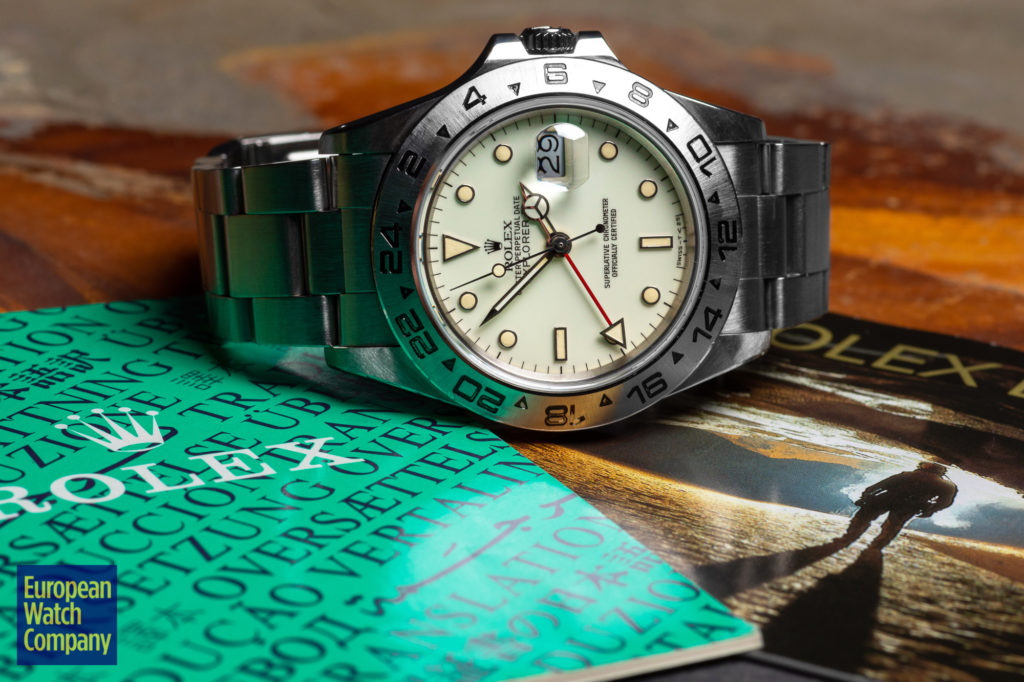
As if the paint isn’t enough, also stay on the lookout for rarer “rail dials”, where the “C” in “Chronometer” aligns perfectly with the “C” in “Certified” directly below it. It’s a rare print only seen in certain Rolex models and within certain production years, adding a nice bit of symmetry to the text at 6 o’clock.
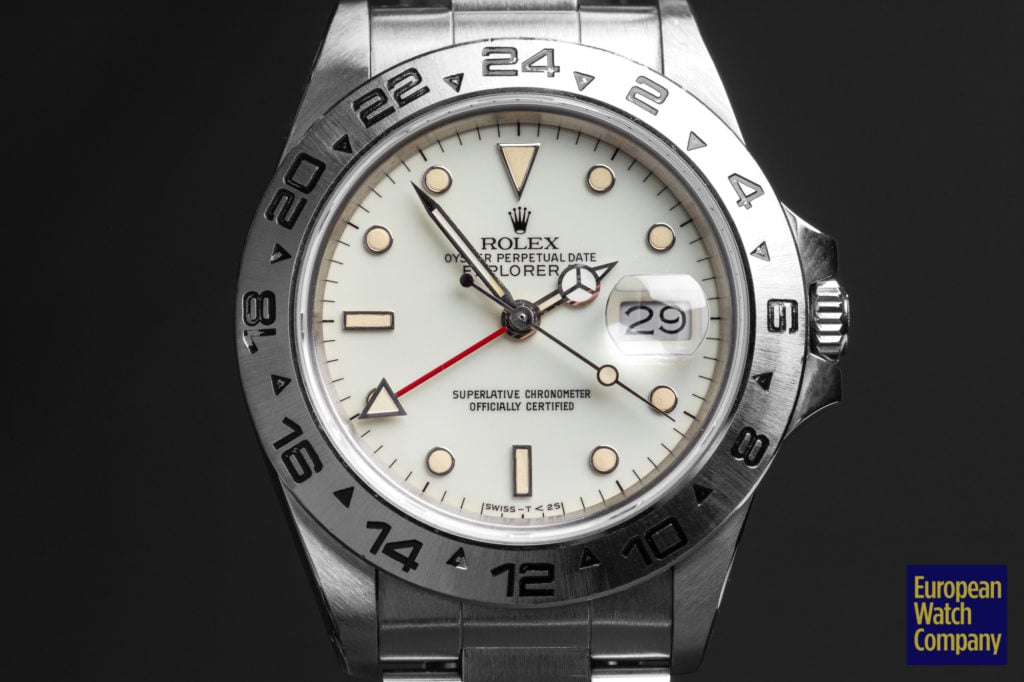
Put together — the short production run, creamy patina, and subtle variations like the “rail dial” — the Explorer II Reference 16550 has already become one of the most collectible references of the transitional Rolex era of the 1980s and 1990s. It almost feels like an anomaly: though a thoroughly modern watch in fit and finish, it maintains the details and charm of a watch twice its age, beckoning collectors to look closer. But, it’s still a tool watch at heart. You can imagine spelunking through a dark cave with the Reference 16550 on your wrist, just a subtle glow of the remaining tritium emanating from the creamy dial to guide you, as the watch was originally intended.
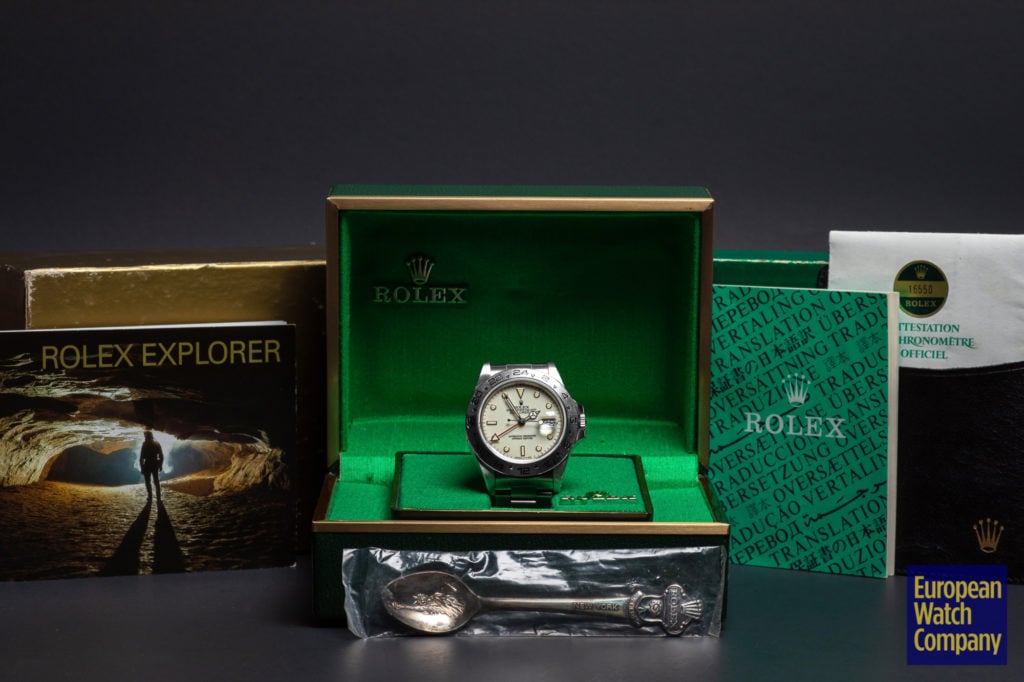
For that reason, it’s the perfect watch for the modern collector seeking a vintage tool watch, or for the vintage collector looking for a modern, wearable watch. It’s a watch that, while it begs you to look closer at the details, also demands to just be worn.
See More of The Rolex Explorer ii 16550
Visit Europeanwatch.com
Previous Article
True Luxury Quartz: The F.P. Journe Élégante
Next Article
A Tale of Two Titans: The Patek Philippe 5396G for Tiffany & Co
Join 75,000+ Other Watch Enthusiasts
Get our new arrivals first.